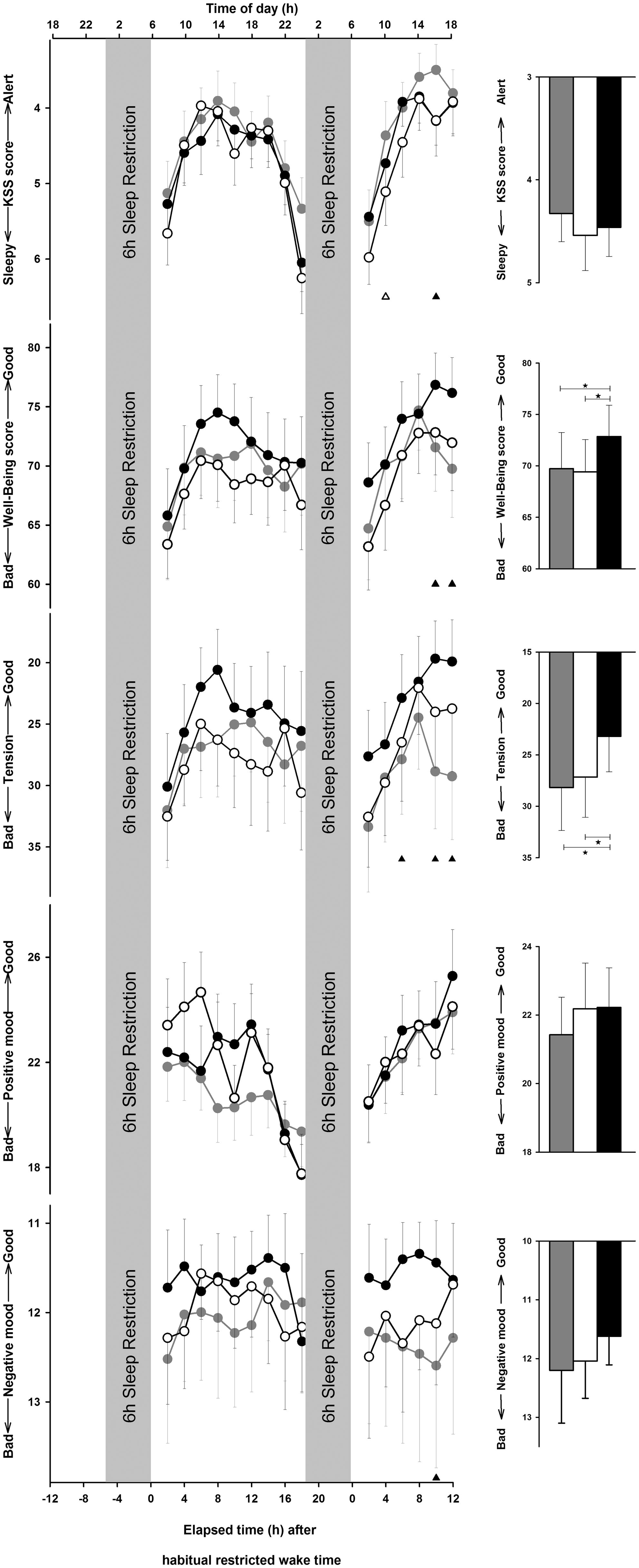Influence of light during your sleep
Back to literature: Literature
Back to main page: PRE2015_3_Groep4
Article: Wake up light
Dawn simulation is a technique that involves timing lights in the bedroom to come on gradually, over a period of 30 minutes to 2 hours, before awakening.
History
The concept of dawn simulation was first patented in 1890 as "mechanical sunrise". Modern electronic units were patented in 1973. Variations and improvements seem to get patented every few years. Clinical trials were conducted by David Avery, MD, in the 1980s at Columbia University following a long line of basic laboratory research that showed animals' circadian rhythms to be exquisitely sensitive to the dim, gradually rising dawn signal at the end of the night.
Clinical use
There are two types of dawn that have been used effectively in a clinical setting: a naturalistic dawn mimicking a springtime sunrise (but used in mid-winter when it is still dark outside), and a sigmoidal-shaped dawn (30 minutes to 2 hours). When used successfully, patients are able to sleep through the dawn and wake up easily at the simulated sunrise, after which the day's treatment is over. The theory behind dawn simulation is based on the fact that early morning light signals are much more effective at advancing the biological clock than are light signals given at other times of the day.
Comparison with bright light therapy
Dawn simulation generally uses light sources that range in illuminance from 100 to 300 lux, while bright light boxes are usually in the 10,000-lux range. Approximately 19% of patients discontinue post-awakening bright light therapy due to inconvenience. Because the entire treatment is complete before awakening, dawn simulation may be a more convenient alternative to post-awakening bright light therapy. In terms of efficacy, some studies have shown dawn simulation to be more effective than standard bright light therapy while others have shown no difference or shown that bright light therapy is superior.[1][2]Some patients with seasonal affective disorder use both dawn simulation and bright light therapy to provide maximum effect at the start of the day.
Other uses
In an elaboration of the method, patients have also been presented with a dim dusk signal at bedtime, with indications that it eases sleep onset. In addition, the technique has been used clinically for patients who suffer from delayed sleep phase syndrome, helping them to awaken earlier in gradual steps, as the simulated dawn is moved earlier.
Non-clinical sleep and wake-up use
A dawn simulator can be used as an alarm clock. Light enters through the eyelids triggering the body to begin its wake-up cycle, including the release of cortisol so that by the time the light is at full brightness, sleepers wake up on their own, without the need for an alarm.
Article: Effects of Artificial Dawn and Morning Blue Light on Daytime Cognitive Performance, Well-being, Cortisol and Melatonin Levels[3]
The research
Volunteers were recruited to participate in this research. One week before the experiment, the participants were requested to refrain from food or drinks that could influence sleep behavior, such as alcohol, coffee and caffeine. Also, the participants had to follow a regular sleep schedule before they could start participating in this research. All participants had to receive all three different light treatments, namely dim light, blue monochromatic LED light and dawn simulated light. The dim light condition lasts for two hours beginning at the scheduled wake-up time. The blue monochromatic LED light starts two hours after the scheduled wake-up time and lasts for 30 minutes. The dawn simulated light starts thirty minutes before the scheduled wake-up time and ends twenty minutes after.
Results
The subjective assessment of sleepiness, well-being, and mood shows that using dawn simulated light is beneficial compared to blue monochromatic LED light and dim light. The dawn simulated light gives a better result on everything except for sleepiness, but it is still better than the dim lights that are often used in sleeping rooms nowadays.
The picture below shows that the use of dawn simulated light increases the cognitive performance during the day. After the first day, the difference between blue monochromatic LED light and dim light is very small, but after the second day, dim light seems to be better than blue monochromatic LED light. Also, at the second day, the difference between dim light and simulated dawn light seems to be very small until approximately 2pm. After 2pm, people exposed to dim light started to have a worse cognitive performance whereas people exposed to simulated dawn light kept increasing their cognitive performance.
References
- Terman M, Terman JS (December 2006). "Controlled trial of naturalistic dawn simulation and negative air ionization for seasonal affective disorder". Am J Psychiatry 163 (12): 2126–33. doi:10.1176/appi.ajp.163.12.2126.PMID 17151164.
- Avery DH; et al. (2001). "Dawn simulation and bright light in the treatment of SAD: a controlled study". Biol Psychiatry. 50 (3): 205–16. doi:10.1016/S0006-3223(01)01200-8. PMID 11513820.
- Virginie Gabel, Effects of Artificial Dawn and Morning Blue Light on Daytime Cognitive Performance, Well-being, Cortisol and Melatonin Levels, jul 2013, http://www.tandfonline.com./doi/full/10.3109/07420528.2013.793196

